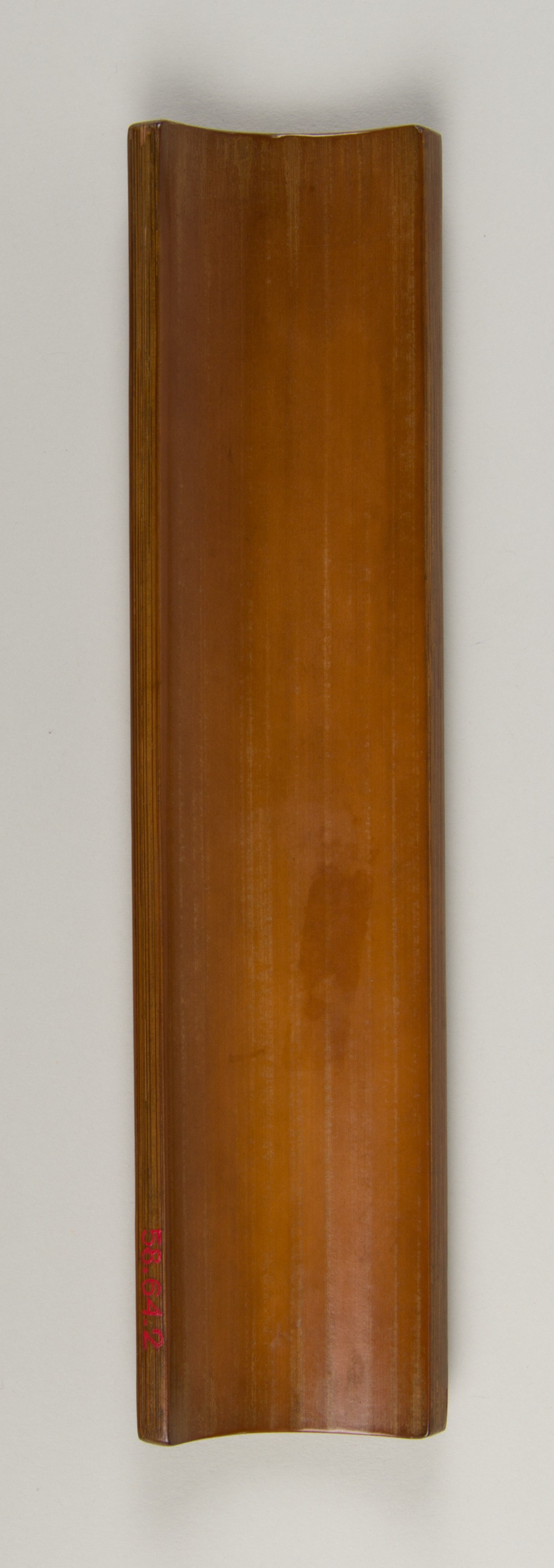Wrist rest
Qing dynasty (1644–1911), Qianlong period (1736–95)
Not on view
Chinese is traditionally written vertically, from right to left and from top to bottom. An armrest is often placed over the last line on the paper while a new line is being written, so that the ink will not be smeared by a wrist or a sleeve. Armrests are usually rectangular, with a concave section, like a roof tile. This example is carved in the reserve-green technique. The yellow-green skin of the bamboo is partially preserved as highlights against a background of the darker and more fibrous inner layer.
This image cannot be enlarged, viewed at full screen, or downloaded.
This artwork is meant to be viewed from right to left. Scroll left to view more.



